Ausangate is more than just a mountain—it has spiritual meaning. It’s a gathering place for thousands of Quechua people as they celebrate the annual Quyllur Rit’i festival (Quechua for ‘star snow’), and is the fifth-highest mountain in Peru at 20,944 feet above sea level. Seeing Ausangate is a reward that comes to those who answer the call of the Peruvian Andes, and experiencing it with the local people and their communities of Chillca and Osefina is the most sustainable and transformational way to do so.
One of Extraordinary Journeys favorite ways of exploring a destination is to immerse clients into the culture, and in this region of Peru, visitors can take lodge-to-lodge treks that can be done in two to six-night trips and are guided in partnership with the local communities. Sustainable, community-based tourism is at work out here as women, men, and elders show guests the lands they’ve tamed and nurtured for centuries.
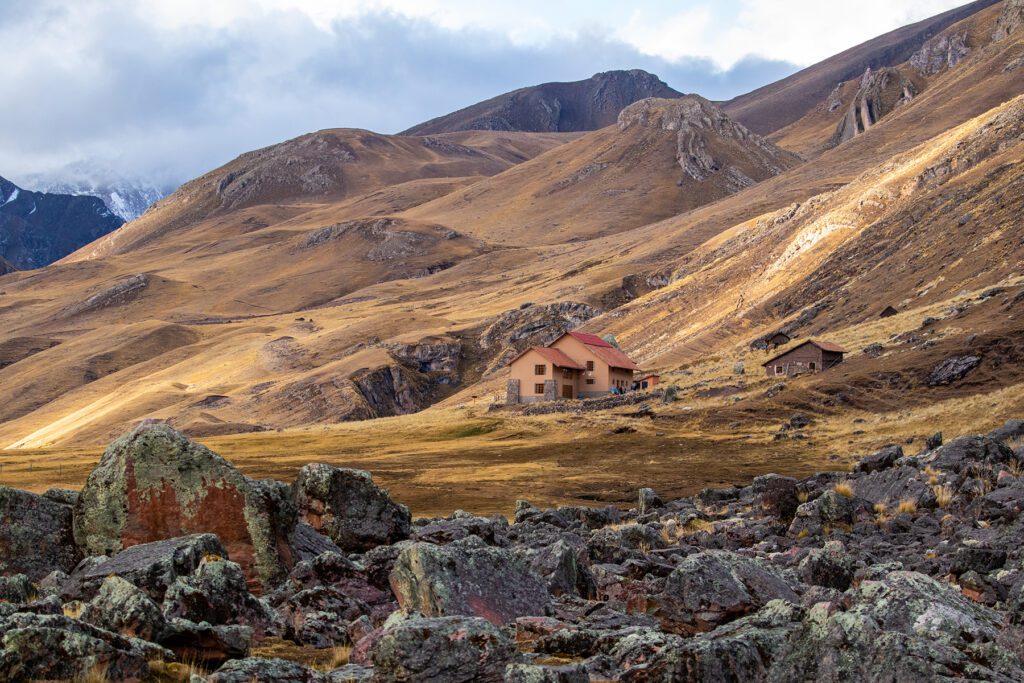
The story of Andean Lodges originates before the properties themselves were hand-built by the local communities. You’ve probably heard of Rainbow Mountain, the famous landmark that millions of travelers flock to see every year. It is perhaps the second most known landmark in Peru, after Machu Picchu. Although Rainbow Mountain can be disputed as a casualty of overtourism, it was actually saved by bringing awareness to the beautiful landmark through tourism in the wake of mining explorations.
In 2015, a Canadian mining company was slated to extract Rainbow Mountain (also known as Vinicunca to the local people). This mountain is more than a pretty geological wonder—it’s a sacred place of immense spiritual importance to the local Indigenous people. The communities here worked together through petitions and place establishment to prove its value was worth more for the world to see than to be destroyed for short-term gain in the mining industry. Fast forward to today, the same communities who had a part in saving Rainbow Mountain are using tourism as a sustainable revenue generator that funds conservation and education programs.

Four lodges connect a multi-day circuit found nowhere else in Peru’s Andes. Unless you’re camping, finding a place to stay out here is not easy. These lodges have brought a level of comfort to the highest of altitudes. In fact, the guides claim Machuraccay Lodge is the highest in the world and at 15,797 feet above sea level. There might be higher lodges, but this one is probably the highest with hot showers, gourmet local food, and hot water bottles that greet tired trekkers in their bed at the end of a long day.
A stay in these lodges goes deeper than providing life-altering experiences at altitudes that challenge even the fittest of hikers. Andean Lodges is a community-based, social enterprise operation that uses the funds made from the treks and lodges to invest in conservation, education, and empowering women. The profits are used for educational programs in the local communities and to fund scholarships for youth to study tourism and hospitality so they too can be part of the sustainable travel movement in these valleys.
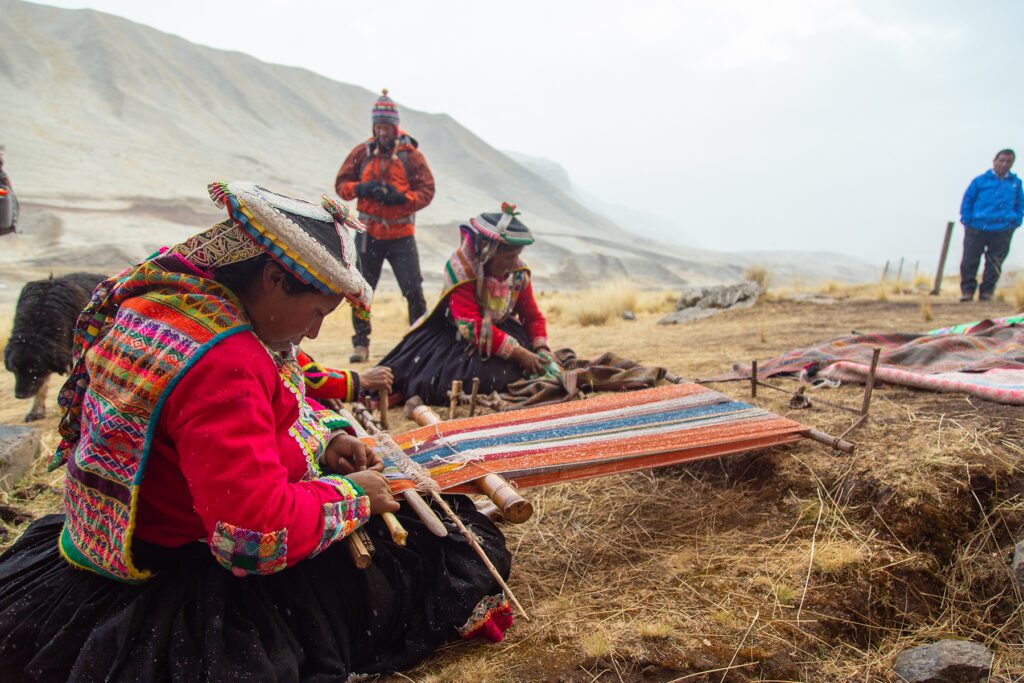
These lodges are culturally rich in every sip, taste, song, and story—and the journey to each lodge is accompanied by the same hosts from each to the next. Every morning after trekkers depart for the next lodge, many of the staff also depart from the lodge and join the trekkers making for a community-binding experience. Among them are alpaca and llama herders. Nobody knows an animal better than the people who take care of them, and the herders are the ones who help transport luggage and supplies while trekkers only have to worry about a small backpack to carry. And with hikes at 15,000 to 17,000-feet high in elevation, every step is extra effort—you’ll be thankful the only thing to carry is a small bag.
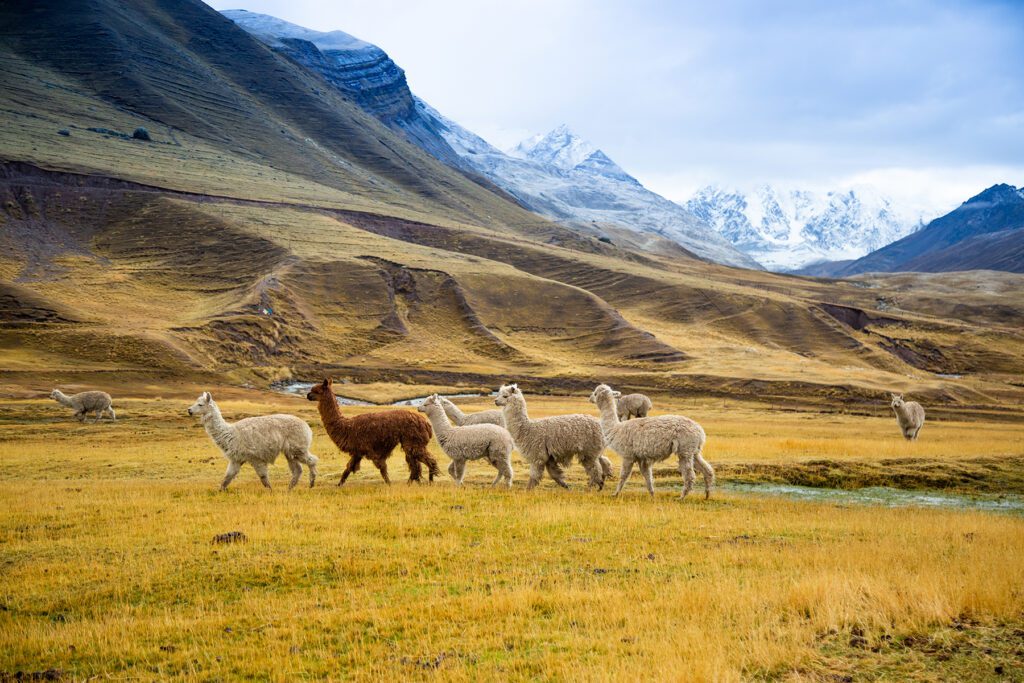
The food is also a journey through Quechua culture as the guides prepare meals with locally-sourced ingredients in an authentic way, just as they would for celebrations at home. The teas are foraged locally and can often help if trekkers are suffering from altitude sickness. Early morning alarms are made more bearable as Quechua ladies sing their traditional songs throughout the lodge awakening trekkers for fresh coffee and breakfast before gearing up for the day of hiking ahead. Each lodge is heated with a wood-burning fireplace that is the centerpiece of conversation and relationship building with the communities who are hosting you, while guides serve as interpreters and translators to bring the people and their home closer to your experience.
Peru’s Andes are among the most beautiful mountainscapes on the planet. Their rugged, glacier-capped peaks have cast shadows in the valleys since time immemorial and the Indigenous peoples have celebrated their importance in annual festivals for centuries. Each lodge is built on a landscape very different from the others and although the altitudes suffocate any chance of arboreal growth, the landscapes seem to thrive with abundant species of birds and vivid colors of flora.
Machuraccay Lodge is located at the foot of the famous Ausangate Mountain. If trekkers have enough energy after the day’s hike in, they can venture to a neighboring glacier and the bizarre pink lake that sits at its toe. Depending on the trek, Chillca Lodge may be the first stop and a gentle trek to ease into a strenuous yet rewarding multi-day journey. It is very difficult to tell whether you’ll have symptoms of altitude sickness or not, so it’s important to get acclimatized by spending time in Peru at higher elevation destinations such as the Sacred Valley or Cusco before jumping into a trek of this caliber.
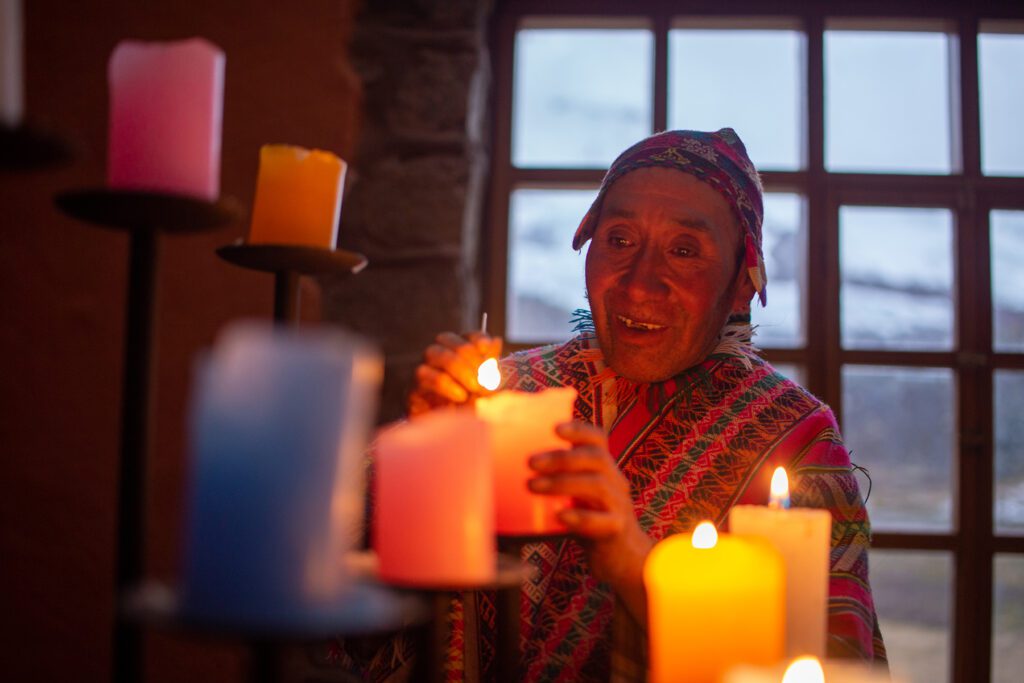
NEED TO KNOW:
- Prior to departing for trekking in Peru, it’s important to make sure you’re physically fit. The altitude up here is real and trekkers will need to get acclimatized before jumping into the trek.
- We recommend spending two or three days exploring ruins, culture, art, and history in Cusco in order to adjust to the altitude.
- This specific trek doesn’t visit Machu Picchu, but it’s a great add-on to the hut-to-hut itinerary (outlined in this carefully-curated itinerary!) Reach out to our team to plan you the perfect Peruvian adventure today.
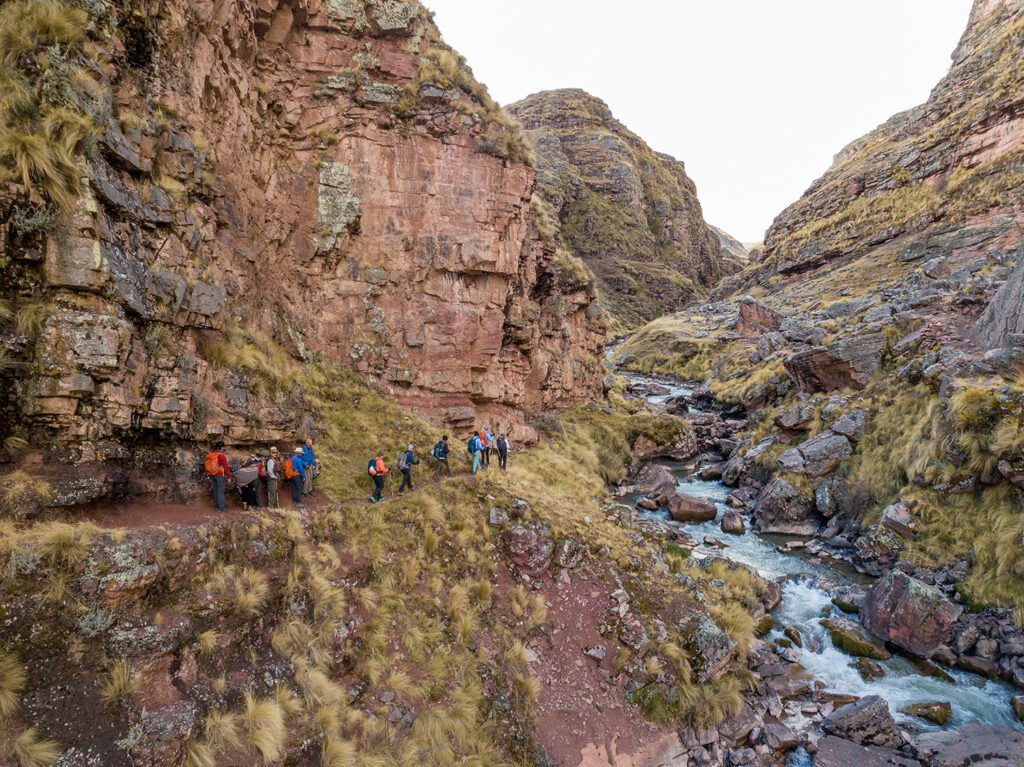
WHAT TO PACK:
- A good set of hiking poles
- Layers of clothing including a base layer and coat (synthetic or down)
- A waterproof raincoat to go over it (GORE-TEX)
- Breathable long-sleeved shirts and tee-shirts (merino wool is best)
- Gloves
- A small backpack with a rain cover and hydro-pack
- Merino wool socks
- A good sturdy pair of high-top hiking boots that have been broken in before going on the trek.
- A beanie
- Sunglasses
- Sunscreen
- If you’re worried about altitude sickness, come prepared with a prescription such as Diamox
Check out these itineraries in Peru:
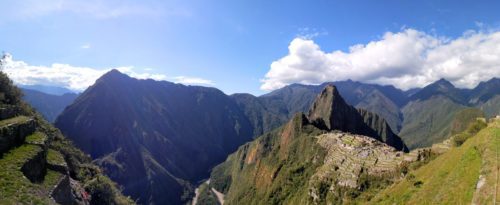
- Itinerary
Sacred Peru
Lima, The Sacred Valley of the Incas, Machu Picchu Pueblo and Cusco
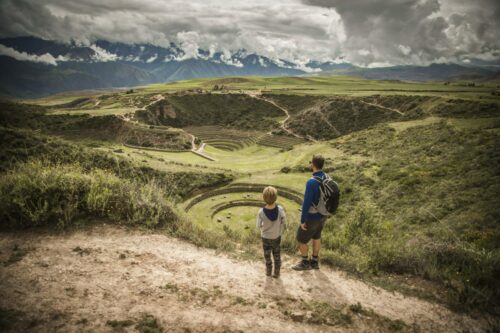
- Itinerary
Journey to Peru: Inca Trail
Discover the Sacred Valley, Inca Trail, Machu Picchu, and Cusco

- Itinerary
Peru: Lodge-to-Lodge Trek & Cultural Retreat
The Salkantay Trek takes you to Machu Picchu in style; cultural highlights await at Lake Titicaca
